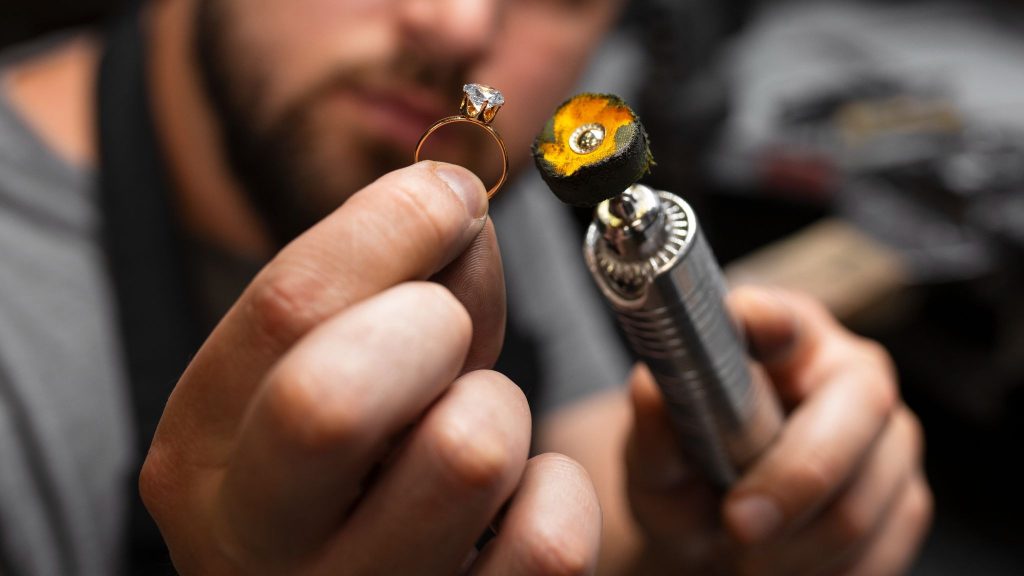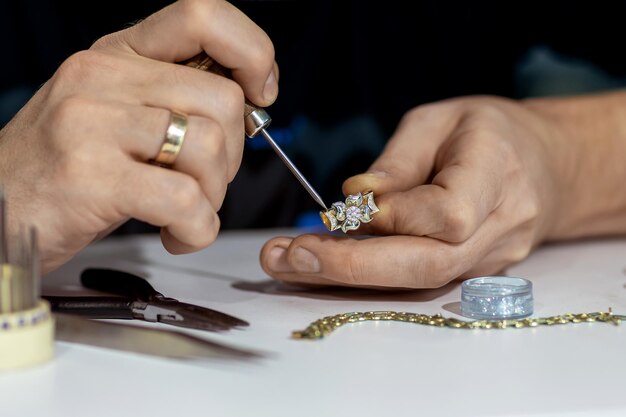Fine jewelry has long symbolized luxury, beauty, and timeless emotion. Yet for decades, it was reserved for those who could afford exclusivity. Today, innovation is rewriting that narrative. Through new technologies, sustainable materials, and digital accessibility, fine jewelry is becoming available to a wider audience. The evolution of this industry shows that elegance doesn’t have to come at the expense of affordability or ethics. More brands are now embracing change offering consumers pieces that combine craftsmanship, conscience, and creativity. This balance between innovation and tradition marks a new era where jewelry can be both exquisite and attainable.

The Rise of Ethical Alternatives
In the world of modern luxury, ethics and sustainability are no longer afterthoughts they are essential values. The introduction of lab grown engagement rings has revolutionized how people view fine jewelry. These diamonds, grown under controlled laboratory conditions, are physically and chemically identical to mined ones but come at a significantly lower cost. They allow couples to embrace the beauty of real diamonds without contributing to environmental harm or unethical mining. This innovation makes it possible for more people to celebrate milestones with stunning jewelry that reflects their principles. Ethical alternatives like these prove that innovation doesn’t mean compromise it means evolution.
Technology Redefining Craftsmanship
Technology has completely transformed jewelry craftsmanship, blending artistry with precision. Advanced tools such as computer-aided design now allow jewelers to experiment with intricate details that were once impossible by hand. Laser engraving adds delicate textures, while 3D printing helps create lightweight yet durable designs. These innovations empower designers to craft truly unique pieces, ensuring creativity isn’t limited by material constraints. At the same time, technology preserves the soul of craftsmanship maintaining the artistry behind every curve, cut, and polish. By merging human creativity with machine precision, jewelry-making has reached new heights of accessibility and innovation.

Sustainable Materials Changing Perceptions
The global conversation around sustainability has influenced every industry, and fine jewelry is no exception. Consumers today seek beauty with responsibility jewelry that’s both luxurious and eco-conscious. Designers are turning to recycled metals like gold and platinum, as well as ethically sourced gemstones. Even the manufacturing process is evolving to minimize waste and carbon emissions. From eco-friendly casting to smart packing tips that reduce waste, sustainability is now an integral part of luxury production. These efforts are redefining fine jewelry, transforming it into a symbol not just of style, but of mindful living.
Customization Bringing Personal Dreams to Life
Personalization has become one of the strongest drivers of modern jewelry trends. Customers now desire pieces that reflect their story, their milestones, and their personality. Custom jewelry allows individuals to choose designs, stones, and metals that match their taste and sentiment. Thanks to digital tools, clients can collaborate with designers online, viewing 3D renderings before the final piece is crafted. This process makes fine jewelry more inclusive, offering bespoke experiences once reserved for high-end boutiques. The ability to design one’s dream piece ensures that every creation feels truly special unique, meaningful, and deeply personal.
Direct-to-Consumer Brands Changing the Game
The emergence of direct-to-consumer (DTC) jewelry brands has disrupted traditional retail models. Previously, multiple intermediaries inflated prices as jewelry moved from producer to retailer. DTC brands now eliminate middlemen, offering luxury-quality pieces directly to consumers at transparent prices. Many also emphasize storytelling sharing the origin of every gem and the craftsmanship behind each design. This transparency builds trust while giving buyers access to premium jewelry without traditional markups. The online marketplace has democratized fine jewelry, allowing people everywhere to experience the beauty of high-end design without excessive cost barriers.
Blending Tradition with Modern Values
While innovation propels the jewelry industry forward, tradition remains its foundation. The artistry passed down through generations still plays a vital role in today’s creations. Craftsmen are now combining old-world techniques with cutting-edge technology to achieve perfection. For example, hand-setting gemstones or engraving by hand preserves authenticity, while modern machines enhance precision. This blend of heritage and innovation ensures that jewelry continues to carry emotional depth and cultural meaning. It’s this balance between past and present that makes modern fine jewelry truly timeless and relevant across generations.
Making Fine Jewelry an Everyday Experience
Gone are the days when fine jewelry was reserved for weddings or grand events. Today’s consumers seek pieces they can wear every day elegant yet versatile. Minimalist designs, stackable rings, and dainty necklaces have made fine jewelry part of daily fashion. Brands are also offering lightweight, durable materials that withstand everyday wear while maintaining luxury appeal. This shift reflects how people view jewelry not just as adornment, but as self-expression. Accessibility in design and pricing has made it possible for everyone to experience the joy of wearing something special, anytime, anywhere.
Empowering Conscious Consumerism
The modern jewelry buyer is informed, thoughtful, and socially aware. With access to digital information, consumers demand transparency, authenticity, and accountability. Many brands now use blockchain technology to verify sourcing and production, while others openly publish details about their artisans and processes. Readers who read fashion articles can see how this shift toward conscious consumerism influences every aspect of design and production. As people make mindful choices, they’re supporting an ecosystem that values ethics as much as aesthetics reshaping fine jewelry into a reflection of integrity and intention.
Conclusion
Innovation has made fine jewelry more accessible, ethical, and personal than ever before. Through advancements like lab grown engagement rings, digital design tools, and sustainable practices, the jewelry world is bridging the gap between luxury and everyday elegance. Consumers now have the freedom to express love, individuality, and values through designs that align with modern ideals. As craftsmanship meets technology and tradition merges with innovation, fine jewelry evolves into something greater than ornamentation it becomes a statement of purpose, connection, and progress. This new era of accessible luxury ensures that beauty truly belongs to everyone.
